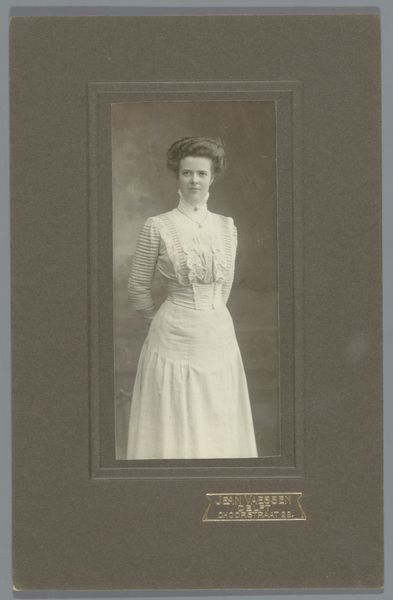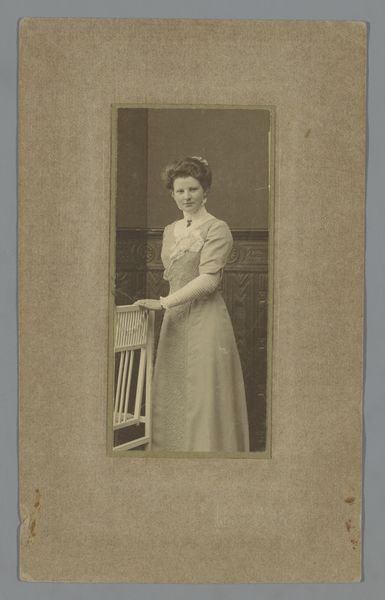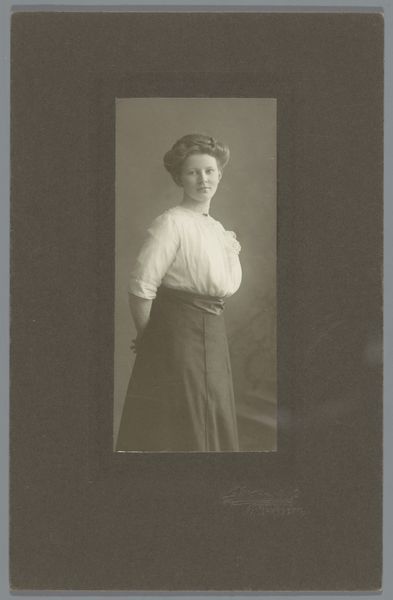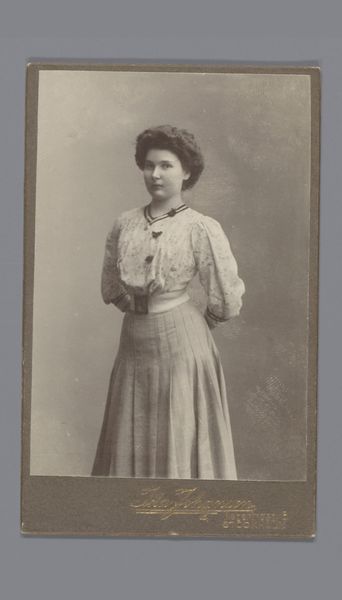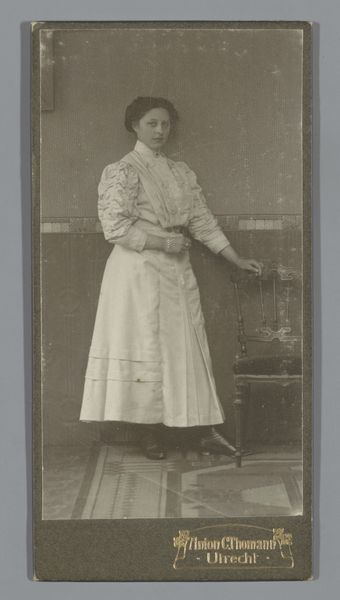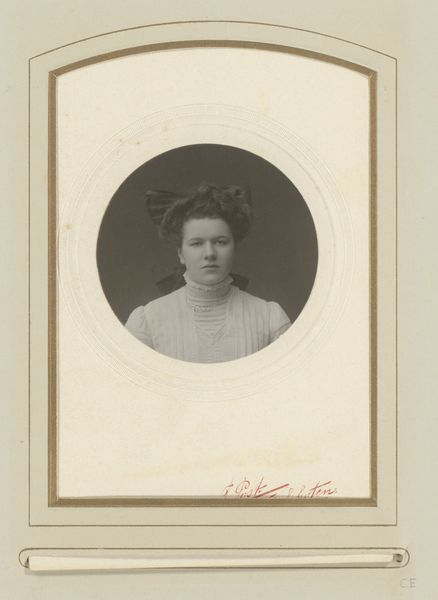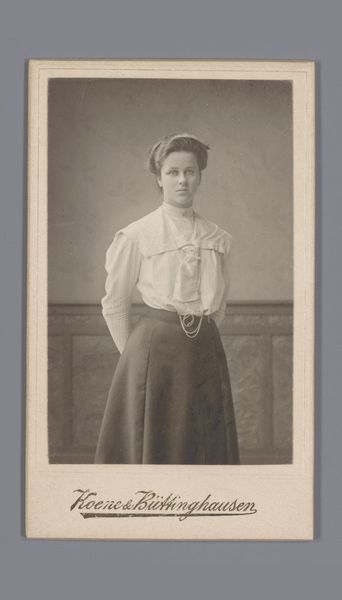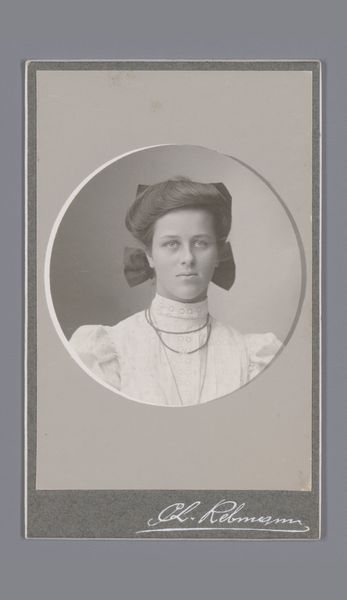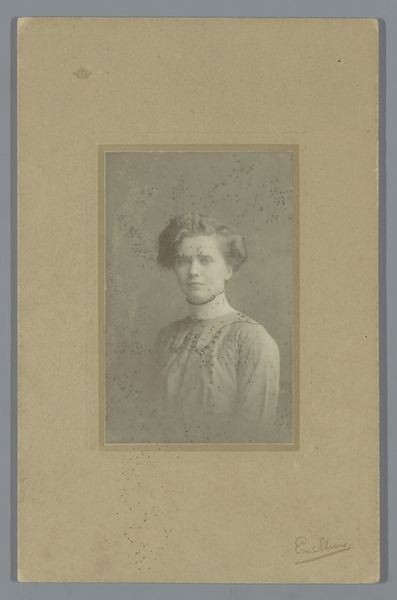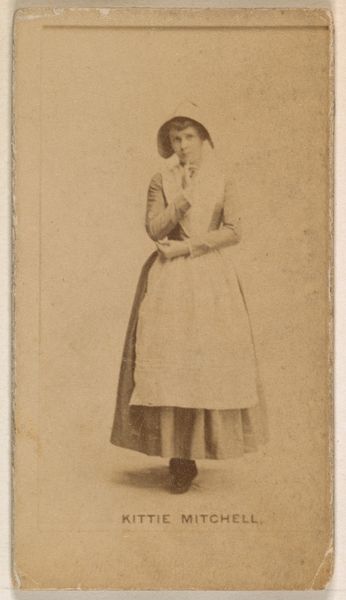
photography
#
photography
#
historical photography
#
historical fashion
#
realism
Dimensions: height 103 mm, width 47 mm
Copyright: Rijks Museum: Open Domain
Editor: This is a photograph titled "Portret van een onbekende vrouw" or "Portrait of an Unknown Woman" by Jean Vaessen, dating from about 1900 to 1920. It's currently held at the Rijksmuseum. It's captivating; I’m struck by the sitter’s quiet gaze and the formality of the pose, especially knowing it was taken so long ago. What do you see when you look at it? Curator: It's fascinating how such a seemingly straightforward portrait can open up discussions about the social constructs of identity and representation at the turn of the century. Photographs like these became increasingly accessible to the middle class. They were about documenting and projecting a certain ideal – in this case, a demure, respectable femininity. Does the fact it is labelled "unknown woman" affect your reading? Editor: It does. If it were someone recognizable, famous even, the image would be completely different. Knowing she's unknown makes me think about the countless unrecorded lives, especially of women, in that era. What was the purpose of taking photos for non-elite people, like her? Curator: Photography was gaining popularity and helped solidify social status. These portraits, taken in studios, were not just personal mementos; they became tools for self-presentation and participation in visual culture. Family albums were incredibly important. Did this sitter's attire – the high-necked dress, the hairstyle with the ribbon – signify adherence to social norms, do you think? Editor: I see your point. It’s almost like performing the role of womanhood expected by society at the time. The photographic framing and its presentation enhance that. Curator: Precisely! Consider also how the photographer, Vaessen, played a role. This wasn’t just a passive recording. It’s a constructed image, shaped by societal expectations and the studio's aesthetic. Understanding this reveals how photography, even back then, was deeply intertwined with the performance of identity. Editor: That changes how I see the piece. Now I realize there is a conversation that opens with the cultural norms of womanhood from that time in history. Curator: Absolutely, and considering these nuances adds depth to our appreciation, transforming it from a simple portrait into a powerful lens through which to examine social history.
Comments
No comments
Be the first to comment and join the conversation on the ultimate creative platform.
